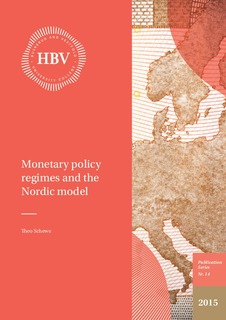Monetary policy regimes and the Nordic model
Report
Permanent lenke
http://hdl.handle.net/11250/285792Utgivelsesdato
2015-06-26Metadata
Vis full innførselSamlinger
Sammendrag
In many contexts, the Nordic countries are regarded as a natural bloc of nations that have common political, cultural and economic characteristics. Open to globalisation, the small Nordic countries are exposed to strong global competition and cyclical influences. Therefore, the basis of the model may be to combine collective risk sharing and openness to globalisation. Studies of the Nordic model do not focus on the question whether the monetary policy regime is a constitutive element of the model. While the core elements of the model have proved to be quite robust and stable, the monetary regimes were exposed to fundamental changes and are quite different today.
According to the “incompatible trinity” (Mundell 1968), a country can only choose two of the three following goals: independent monetary policy, fixed exchange rates and free capital movements. As EU-member states, Finland adopted the Euro and Denmark became a member of the ERMII, pegging the Danish Crown to the Euro at a fixed rate. Contrary to a fixed exchange rate regime, the third Nordic EU-member Sweden, as like as the non-EUmember Norway, introduced flexible exchange rates combined with inflation targeting. In his study, I explore the question whether and how the monetary policy regimes are significant to the success of the Nordic Model given the fact that monetary policies in the Nordics were designed quite differently during the past fifteen years
In some way, all four Nordic countries have been conducting a monetary policy regime of flexible inflation targeting since the 1990s (Norway as late as from 2001). In a way, all four Nordics have limited power to conduct an independent monetary policy. In order to keep the own country’s international competitiveness, they have to get help from the parties in the labour marked to adapt wage setting compatible to the external inflation target.
